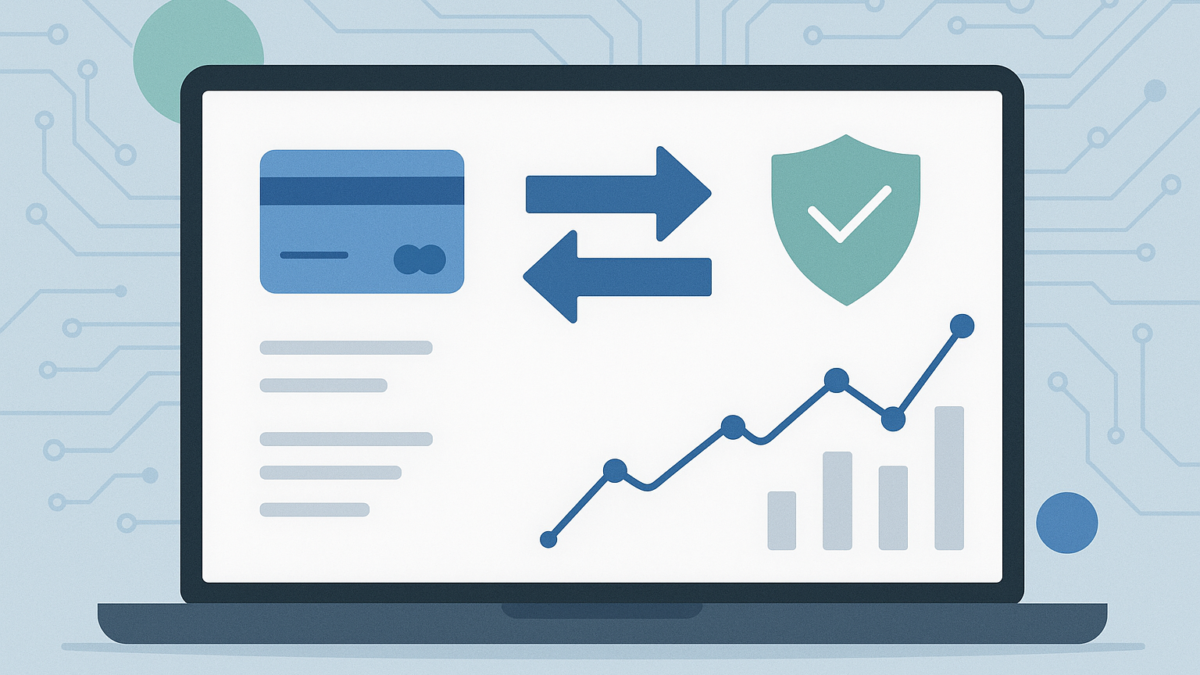Table of Contents
Introduction
In the rapidly evolving world of financial technology (FinTech), few innovations have made as significant an impact as embedded finance. While embedded finance has already begun reshaping consumer experiences, its influence is now spreading quickly into the B2B (business-to-business) landscape. In 2025, embedded finance is emerging as the next big disruptor, offering new revenue streams, improving customer loyalty, and streamlining operations for businesses of all sizes.
So, what is embedded finance, and why is it becoming essential for B2B FinTech? Let’s explore.
What is Embedded Finance?
Embedded finance refers to the integration of financial services directly into non-financial platforms, applications, or ecosystems. Rather than redirecting customers to traditional financial institutions, companies can now provide services like payments, lending, insurance, or investment products within their existing software.
For example, imagine a B2B SaaS platform offering invoice financing, working capital loans, or instant payments without requiring users to leave the platform. With embedded finance, financial services become a natural extension of the platform’s core offerings—creating a seamless experience.
Why it is Game-Changing for B2B
- Better Customer Experience: B2B transactions are often complex and involve larger sums, longer payment cycles, and multiple approval layers. Embedded finance simplifies these interactions by integrating financial services where users already work—removing friction, saving time, and improving satisfaction.
- New Revenue Streams: B2B platforms can monetize financial features like lending, payments processing, and insurance. Rather than relying solely on subscriptions or commissions, companies can diversify income by offering value-added financial services.
- Stronger Loyalty: When businesses can handle their financial needs inside the platforms they already use, they’re less likely to switch providers. Embedded finance helps platforms become indispensable partners rather than just software vendors.
- Data-Driven Personalization: B2B platforms already have rich data on user behavior. Embedded finance allows them to use that data to offer tailored financial solutions, improving conversion and reducing risk.
Key Use Cases in B2B
- Embedded Payments: Platforms like Shopify and Bill.com offer integrated payment options, allowing businesses to pay suppliers or receive payments without third-party gateways.
- Embedded Lending: Companies like Stripe and Square provide cash advances and loans directly through their platforms, streamlining access to working capital.
- Embedded Insurance: Logistics platforms can offer shipment insurance or equipment coverage at checkout, increasing peace of mind for buyers.
- Embedded Banking: Tools like Stripe Treasury and Rapyd help platforms offer bank accounts, cards, and financial management tools natively.
See Also: 5 Insanely Useful FinTech Apps You’ll Wish You Found Sooner
How B2B Platforms Benefit
- SaaS Companies: Add financial services as premium features, reducing churn and boosting ARPU (average revenue per user).
- Marketplaces: Offer embedded lending or insurance to simplify transactions and protect participants.
- Logistics/Procurement Platforms: Provide embedded payments, financing, or insurance for end-to-end control of the transaction journey.
Challenges and Considerations
While the opportunities are enormous, embedded finance in B2B isn’t without challenges:
- Regulatory Compliance: Financial services come with strict regulatory obligations, from KYC (know your customer) to data privacy and anti-money laundering laws. Platforms must partner with licensed providers or obtain licenses themselves.
- Risk Management: Offering credit, payments, or insurance means taking on risk. Platforms need robust underwriting, fraud detection, and risk analytics.
- Technology Integration: Embedding finance requires seamless integration via APIs, high security standards, and scalability to handle volume.
The Future of Embedded Finance in B2B
Analysts predict that embedded finance could generate over $7 trillion in global transaction volume by 2030, with a significant share from B2B use cases. In the coming years, expect to see:
- More SaaS platforms embedding working capital solutions and BNPL (buy now, pay later) features.
- B2B marketplaces offering in-house financing to speed up transactions.
- Greater availability of embedded insurance, particularly in logistics, construction, and procurement sectors.
- A surge in partnerships between B2B software firms and banking-as-a-service (BaaS) providers like Stripe, Marqeta, and Synctera.
How to Start with Embedded Finance
If you’re a B2B SaaS platform, marketplace, or service provider, here’s how you can explore embedded finance:
- Identify your users’ financial pain points. Do they need faster payments? Easier credit? Lower risk?
- Choose the right BaaS or embedded finance partner (e.g., Stripe Treasury, Rapyd, Synctera) to handle compliance and back-end operations.
- Pilot financial features with a segment of your users before scaling.
- Focus on user experience, security, and trust to ensure adoption.
Final Thoughts
Embedded finance is more than a trend—it’s becoming a core feature of modern B2B platforms. Businesses that adopt embedded finance will be better positioned to deliver value, retain customers, and capture new revenue streams in 2025 and beyond.
👉 Stay ahead of the curve. Visit iTMunch for more insights on embedded finance, B2B payments, and the future of financial technology!





